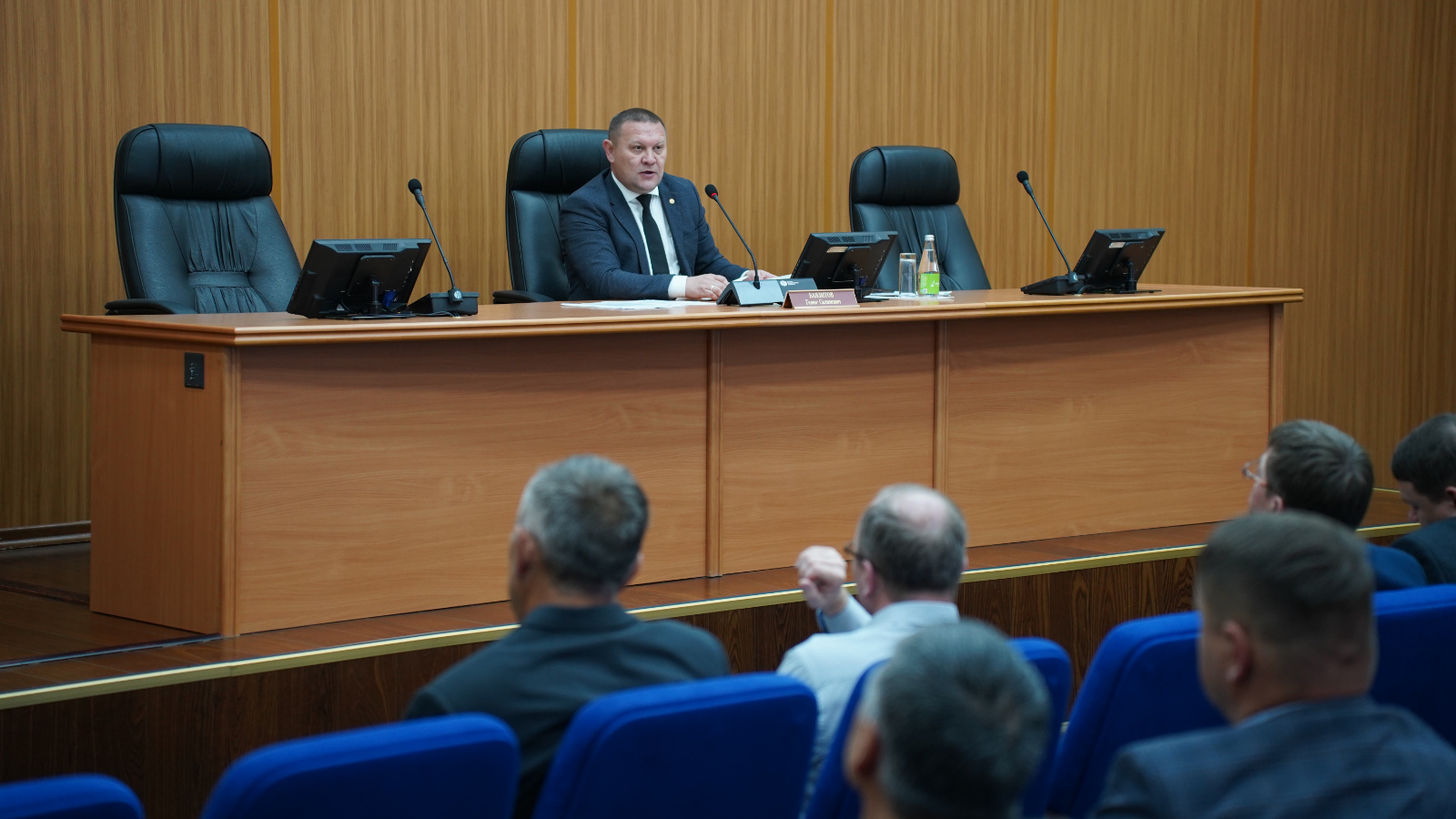The Ministry summed up the results of livestock production for 8 months of the current year

Today, the Ministry of Agriculture and Food of the Republic of Tatarstan held a meeting with the regions of Tatarstan, at which they summed up the results of livestock production for 8 months of the current year. The meeting was chaired by the Deputy Minister of Agriculture and Food of the Republic of Tatarstan Gelyus Bayazitov.
The event was attended by livestock consultants, heads of selection and breeding services of agriculture and food departments in municipal areas and other responsible persons.
The head of the department for the development of livestock industries, Siren Nigmatzyanov, reported in his speech that in 8 months of this year, 1 million 115 thousand tons of milk were produced, 111% of the 2022 level. The average milk yield per cow was 5,181 kg, which is 420 kg more than last year.
Meat produced of all types of animals was 274 thousand tons, 99% compared to last year, including cattle meat - 65 thousand tons, pig meat - 65 thousand tons, poultry meat - 142 thousand tons.
The number of cattle as of September 1 was 632 thousand heads, the number of cows was 223 thousand. The number of pigs was 459 thousand heads, sheep and goats - 54 thousand 600 heads, horses - 19 thousand 900 heads. The number of birds exceeds last year's level by 6%.
The leaders in increasing the number of cattle are Menzelinsky, Kukmorsky, Baltasinsky, Mamadyshsky, Elabuga and Bugulminsky districts.
In 22 districts there is a reduction in the number of cows. The main reduction in livestock is in investment companies. Novosheshminsky district has lost 1,900 cows since the beginning of the year, Alekseevsky and Alkeevsky districts have lost more than 900 cows, Tyulyachinsky and Kaybitsky districts have lost more than 700 cows.
Regarding feed procurement, he noted that as of September 11, 405 thousand tons of hay, 1 million 950 thousand tons of haylage, 1 million 46 thousand tons of silage had been harvested.
“In the second half of October, seminar-meetings will be organized in 5 zones of the republic, in which technological issues and the experience of advanced farms will be discussed in order to preserve livestock, increase productivity and successful wintering of livestock,” Siren Nigmatzyanov noted at the end of his speech.
About the long-term target program “Development of horse breeding and equestrian sports in the Republic of Tatarstan until 2030”, the leading adviser to the department for the development of livestock industries Ayrat Khabibullin told. He noted that in pursuance of the instructions of Rais of the Republic of Tatarstan R.N. Minnikhanov on increasing the number of horses in the Republic of Tatarstan to 50 thousand heads, the Ministry of Agriculture and Food of the Republic of Tatarstan is developing a long-term target program. In order to develop productive and sports horse breeding in the municipal districts of the Republic of Tatarstan, it is first necessary to determine the quantitative opportunities in each district for the creation of productive horse farms and horse breeding farms.
The program provides for the creation of productive horse breeding farms with a population of 30 to 100 mares. In this area, subsidies are provided for the purchase and maintenance of horses. A subsidy of 5 thousand rubles is given for the maintenance of horses.
The second direction is the creation of productive horse breeding farms with over 100 heads of mares - this is herd horse breeding. In this direction, subsidies will also be allocated for the purchase and maintenance of mares at the rate of 7.5 thousand rubles per year, additionally for the construction of barn-type group stables (50/50).
“You can become a participant in the program on the basis of completed applications sent to the e-mail of the Ministry of Agriculture and Food of the Republic of Tatarstan. At the moment the program is at the approval stage. But we are already collecting applications for productive horse breeding,” he noted.
Next, the head of the department of breeding and animal reproduction, Damir Minnebaev, made a report. He noted that for 8 months of this year, the rate of offspring of calves and piglets is 99% compared to last year. During the month of August, 21 thousand calves were born, which is 216 animals less than last year.
The positive dynamics of producing lambs and foals continues. Indicators of calf production in 21 districts have an increase compared to last year. The increase in calving occurred mainly due to the growth of imported heifers, which is directly reflected in these areas by an increase in gross milk production.
They also worked well in the insemination of cows and heifers, both in the public sector and in private farms of the population. In 8 months, 62 thousand cows were inseminated, plus 6 thousand heads compared to last year. Artificial insemination coverage was 62%, which is 6% more than last year.
The Buinsky and Bugulma districts are working with positive dynamics in the number of piglets compared to last year. “Colleagues, there is a need to take a serious approach to the protocol tasks set at the meeting following the results of reproduction,” Damir Minnebaev emphasized.
At the end of the meeting, Gelyus Bayazitov invited the participants of the working meeting to attend the International Forum “Kazan Digital Week 2023”, which will take place on September 20-22 at the exhibition site of the KazanExpo International Exhibition Center.